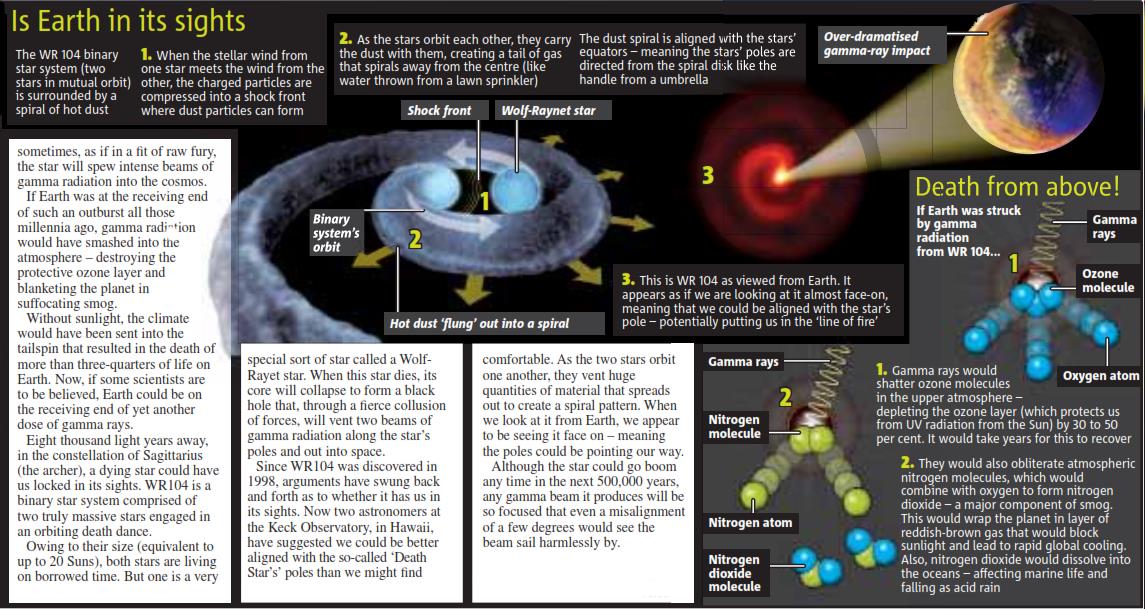Dark Matter RESEARCH
Invisible Means Of Support
In the early 1930s, the eminent Swiss astronomer Fritz Zwicky noticed something very odd as he was looking to the skies: Galaxies seemed to move around each other too fast.
Zwicky was scrutinizing a group of eight galaxies orbiting one another more than 350 million light years away in the Coma Galaxy Cluster. Drawing from early work by Issac Newton and Albert Einstein, he understood the balance of forces necessary to keep the galaxies in this dance. Like a yo-yo swung by a child, they need both the centrifugal force pushing them outward and the string-in this case gravity-pulling them back in. Too much force inward and the system collapses; too much outward and the galaxies fly apart.
From a yo-yo to a galaxy, every object in the universe with mass exerts a gravitational pull on other objects. To Zwicky, the galaxy cluster he was observing appeared to have too little mass, and therefore too little gravity, to keep the galaxies from flying off into space. He and his colleagues theorized that these and all galaxies must be dominated by matter invisible to the eye. They call it Dark Matter.
Equipped with an understanding of how gravity works and extensive observations of planets, stars and galaxies, scientists have in fact concluded that less than one-fifth of the matter in the universe is visible.
The remainder, dark matter, has no interaction with regular matter except through the force of gravity. Nevertheless, so much dark matter exists in the universe that its gravitational force controls the lives of stars and galaxies.
What, then, would dark matter look like if we could see it? A team led by astrophysicist Piero Madau of the University of California-Santa Cruz has taken a substantial step toward answering this question.
Using the power of Oak Ridge National Laboratory's Jaguar supercomputer, Madau's team has run the largest simulation ever of dark matter evolving over billions of years to envelop a galaxy such as our own Milky Way. The envelope is known as a dark matter halo.
Madau and his collaborators-including Juerg Diemand and Marcel Zemp, both of UCSC, and Michael Kuhlen of the Institute for Advanced Study in Princeton, New Jersey-reviewed the simulation and their findings in the journal Nature. The simulation followed a galaxy worth of dark matter through nearly the entire history of the universe, dividing the dark matter into more than a billion separate parcels. The effort was staggering and involved tracking over 13 billion years the evolution of 9,000 trillion trillion trillion tons of invisible materials spread across 176 trillion trillion trillion square miles. Each parcel of dark matter was 4,000 times as massive as the sun.
Hypothetical Particles With Real Gravity
Scientists are still trying to determine exactly what dark matter is. Candidates include hypothetical particles such as the neutralino, the sterile neutrino, the axion or some other weakly interacting massive particle. Fortunately, researchers do not need to fully understand dark matter in order to simulate it. All they need to know is that dark matter interacts with other matter only through gravity and is cold, meaning the matter is made up of particles that were moving slowly when galaxies and clusters began to form. Using initial conditions provided by observations of the cosmic microwave background, Madau and his team were able to simulate dark matter through a computer application called PKDGRAV2, developed by a group of numerical astrophysicists at the University of Zurich, who ignored visible matter and focused entirely on the gravitational interaction among a billion dark matter particles. The project had a major allocation of supercomputer time through the Department of Energy's Innovative and Novel Computational Impact on Theory and Experiment program. The simulation used about 1 million processor hours on the Jaguar system, located at ORNL's National Center for Computational Sciences.
"The computer was basically just computing gravity," Madau explained. "We have to compute the gravitational force among 1 billion particles, and to do that is very tricky. We are following the orbits of these particles in a gravitational potential that is varying all the time. The code allows us to compute with very high precision the gravitational force due to the particles that are next to us and with increasingly less precision the gravitational force due to the particles that are very far away because the gravity becomes weaker and weaker with distance."
Dark matter is not evenly spread, although researchers speculate it was nearly homogeneously
distributed immediately after the Big Bang. Over time, however, gravity pulled the matter together, first into tiny "clumps" having more or less the mass of Earth. Over billions of years these clumps were drawn together, a process that continued until they combined to form halos of dark matter massive enough to host galaxies.
One lingering question was whether the smaller clumps would remain identifiable or would smooth out within the larger galactic halos. The answer required a state-of-the-art supercomputer such as Jaguar, which at the time of the simulations in November 2007 was capable of nearly 120 trillion calculations a second. Because earlier simulations did not have the resolution to resolve any unevenness, the results appeared to show the dark matter smoothing out, especially in the galaxy's dense inner reaches.
Madau's billion-cell simulation, however, provided enough resolution to verify that the earliest forms of dark matter do indeed survive and retain their identity, even in the very inner regions, where our solar system is located.
"We expected a hierarchy of structure in cold dark matter," Madau explained. "What we did not know is what sort of structure would survive the assembly because as these subclumps come together they are subject to tidal forces and can be stripped and destroyed. Their existence in the field had been predicted. The issue was whether they would survive as assembled together to bigger and bigger structures."
"What we find," he continued, "is the survival fraction is quite high."
Madau's team will be able to verify its simulation results using the National Aeronautics and Space Administration's Gamma-Ray Large Area Space Telescope. Launched on June 11, 2008, The telescope will scan the heavens to study some of the universe's most extreme and puzzling phenomena:
gamma-ray bursts, neutron stars, supernovas and dark matter, just to name a few. While dark matter particles cannot themselves be detected (direct detection of dark matter is being pursued by large underground detectors), researchers believe that dark matter particles and antiparticles may be annihilated when they bump into each other, producing gamma rays that can be observed from space.
The clumps of dark matter predicted by Madau's team should bring more particles together and thereby produce an increased level of gamma rays.
A second verification comes from an effect known as gravitational lensing, in which the gravity exerted by a galaxy along the line of sight bends the light traveling from faraway quasars in the background. If the dark matter halos of galaxies are as clumpy as this simulation suggests, the light from a distant quasar should be broken up, like a light shining through frosted glass.
"We already have some data there," Madau noted, "which seems to imply that the inner regions of galaxies are rather clumpy. The flux ratios of multiply imaged quasars are not as you would predict with a smooth intervening lens potential. Instead of a smooth lens, there is substructure that appears to be affecting the lensing process. Our simulation seems to produce the right amount of lumpiness."
Madau's simulations in less than two years have reshaped the discussion about how our universe is held together. As researchers have access to increasingly powerful supercomputers, their findings could enable them to join their predecessors Newton and Einstein in unlocking the door to some of humankind's most fundamental questions.-Leo Williams




![]()

Study
Theory
Main Index
Space Cosmology
Theories Research
*
About
Science Research
Science Theories
Desk
Site Map
BookShelf
Discovering The Universe
Copyright © by Nigel G Wilcox · All Rights reserved · E-Mail: ngwilcox100@gmail.com
Designed by Nigel G Wilcox
Powered By AM3L1A
Pages within this section:
1
2
Pages:
Sub-Menu










